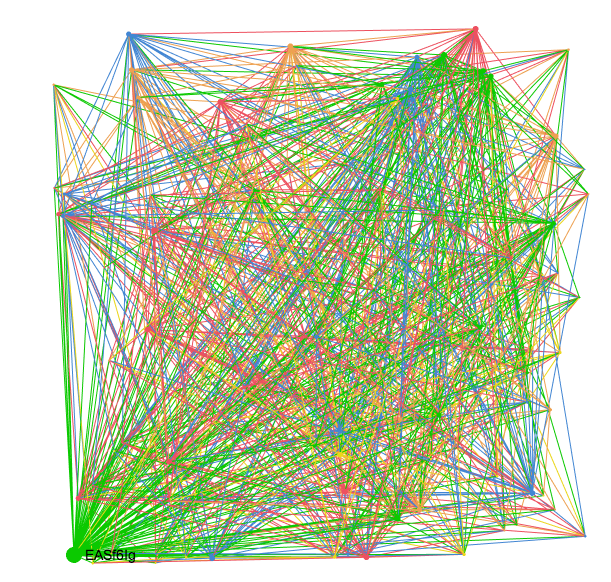At 3 Tier Logic I’ve been building a prototype for a future product behind the scenes, and to demonstrate some of the concepts I actually went with a Graph that is now becoming a little outdated: Jung.
Jung is an interesting project that, although it last saw love in 2010, was very helpful in demonsrating a proof of concept. It’s last major version upgrade bumped it to version 2 and it seems that the original contributors have since abandoned the project. However, it’s possible it was abandoned due to the reason that it is a very mature Java library. The only additional development I’d consider is parallelizing many of its operations and finding ways to make it scale with ease.
Jung has a full suite of algorithms that are available in sub-projects. A blogger was very nice enough to put together this detailed page explaining the usage of each importance algorithm. It also has a very interesting visualization library that is meant for Java applets - something I did not use. However given its maturity and Java backbone, I found it very performant for smaller graphs.

I was able to produce graphs such as the one above in less than a second, and also use advanced Importance algorithms on the same graph in a similar tolerable performance: averaging 0.5 seconds for PageRank across all nodes. In true Java fashion you have to call additional methods after initializing your algorithm to get them to work. I’m still unsure whether I liked this style or not.
Unlike some other open-source graph libraries, Jung allows you to easily set your own custom types. I found coding these APIs just as easy in Scala as compared to Java.
/**
* factory method for new graphs
* @return a DirectedSparseMultigraph that uses UserVertex for nodes and RelationshipEdge for edges
*/
def graphFactory: DirectedSparseMultigraph[UserVertex, RelationshipEdge] = {
new DirectedSparseMultigraph[UserVertex, RelationshipEdge]()
}
Some caveats that were a bummer, meaning I could not put it into production:
- Jung is not parallelized in the backend or on some advanced algorithms
- Many complex algorithms, including Markov Centrality, result in OutOfMemory errors with more than 3,000 nodes and 4GB of allocated heap
- Productionizing Jung would require a very large machine given the above
At 3 Tier Logic we’re still eyeing a distributed Graph such as Titan to solve some of our problems, but in the meantime I’ll still be tinkering a little more with Jung. My full compliments to its developers, it’s come a long way since v1.
